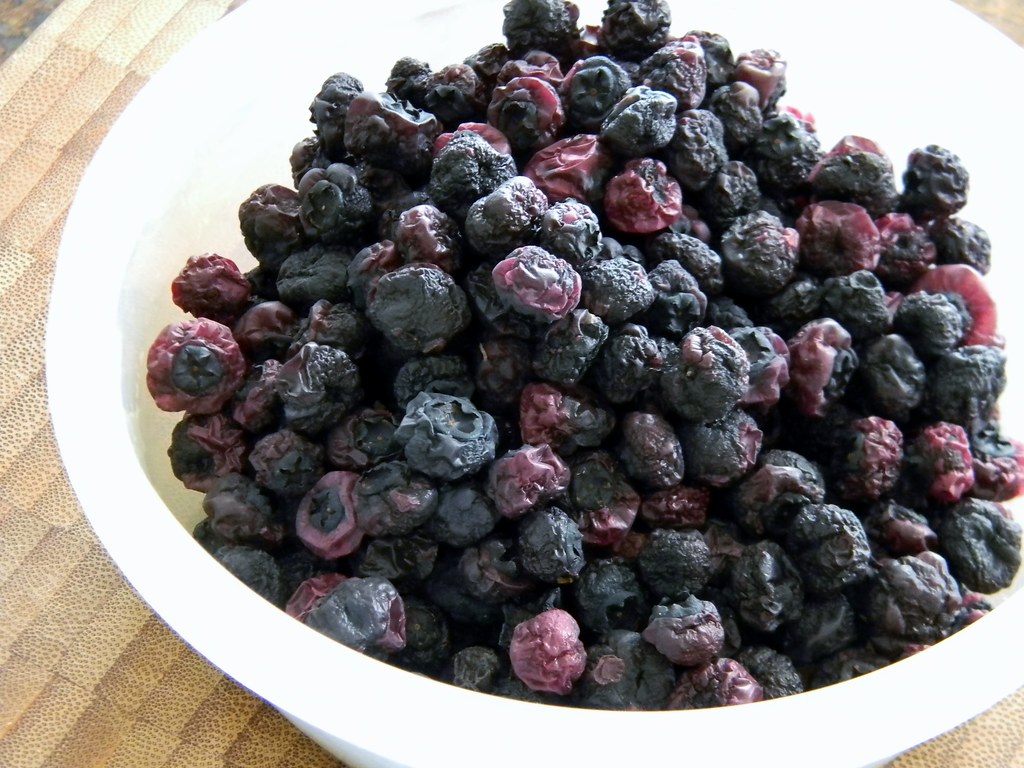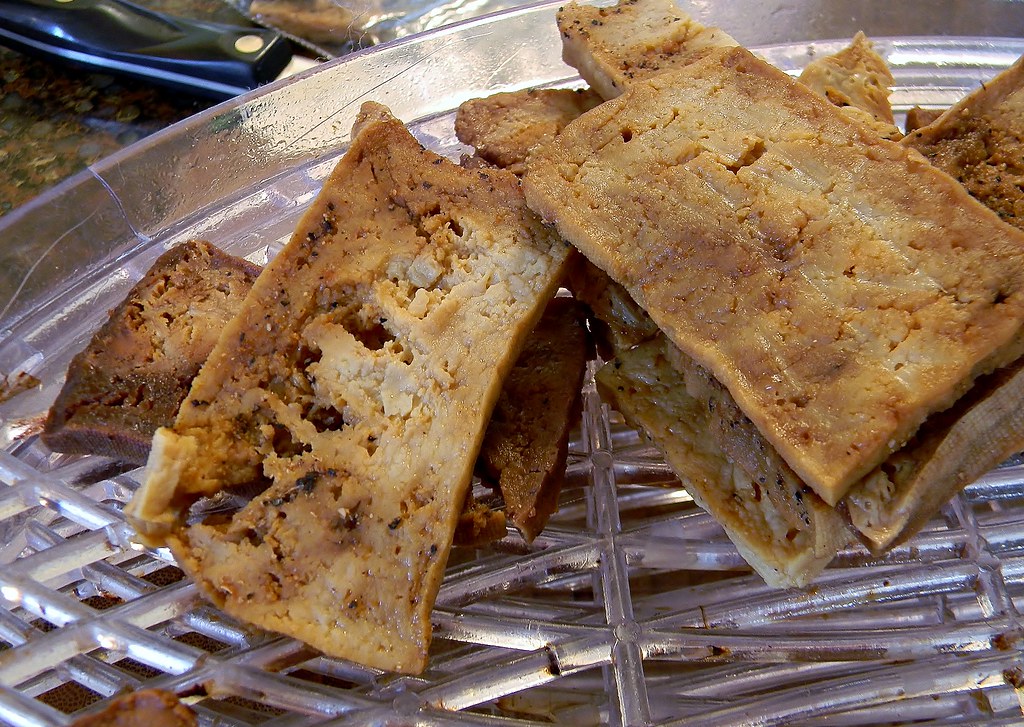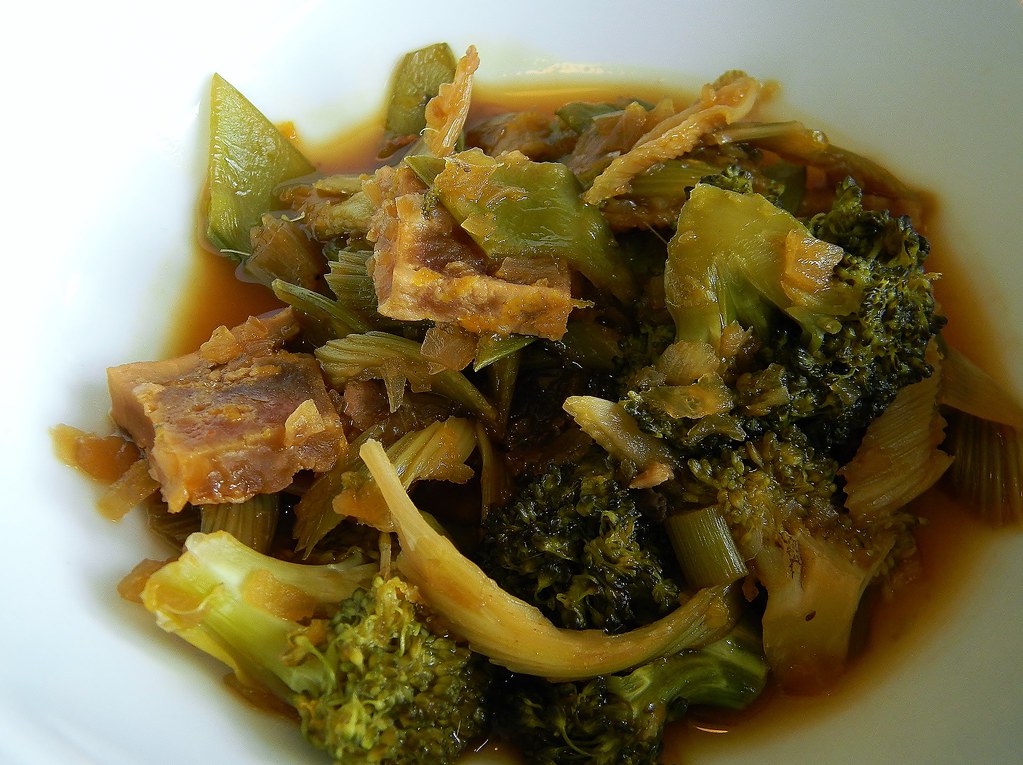Publisher: Robert Rose (2009)
 |
| Dried Wild Blueberries |
One of the easiest and cheapest ways to make food shelf stable indefinitely (or at least longer) is dehydrating. Removing the water from foods reduces the likelihood of spoilage greatly and allows for higher volume per gram ratios - a boon for backpackers or bikers - and saves freezer and fridge space for fresh, local foods. Dehydrating preserves nutrients and (in most cases) flavours, and allows even the most casual homesteader to have a "just in case" section of their pantry primed for unexpected guests or financial stress. All these benefits can cost as little as $40 for a serviceable dehydrator, and for the truly obsessed more upscale models can be purchased for upwards of $200.
 |
| Tofu "Jerky" |
This book is filled with lots of ways to not only dry your own foods at home safely, but ways to use them too. Some of the recipe are a bit hit-and-miss texture wise (like Teriyaki Orange Simmered Beef (p.122)) especially if you are used to eating 100% fresh. However, other recipes like Pear, Raisin and Walnut Chutney (p. 160) and Mushroom, Garlic and Rosemary Soup (p. 96) seem to be made for the technique. Desserts, snacks and quickbreads abound as well, and are a great first choice for those learning to cook with dried food. Black Forest Cookies (p. 203) and Secret-Ingredient Fudgy Brownies (p. 208) are on my to do list for sure!
If you're looking to try a new way of looking at food and cooking, why not try a new method? The Dehydrator Bible will open your eyes to a delicious, nutritious world - and I'm sure you'll be hooked too.
 |
| Teriyaki Orange Simmered Tofu (p. 122) |
From the Back Flap:
This 50,000-copies-sold bestseller on food dehydration has been updated!
Whether you grow your own food, buy it locally from farmer’s markets or farmstands or even buy it from a regular supermarket, seasonality still affects its price and abundance. Therefore, it makes sense to preserve food for those times when it’s not as plentiful, or not available at all. Drying food is a wonderfully tasty and easy way to do this.
All of the wonderful original recipes are still here. What has changed is that the “Dehydrating Foods” section has been expanded to include even more comprehensive and complete information about dehydrating foods, along with even more tips and techniques.
The book includes more than 150 recipes for dehydrating herbs and seasonings, fruits, vegetables, meats and fish, and more than 250 delicious recipes that actually use the dehydrated foods as ingredients so you can put home-preserved food to work for you in your home, RV, boat or campsite.
The easy-to-follow drying instructions and time guidelines will make even a novice cook feel like a seasoned professional in no time. So plant a few extra rows of tomatoes or beans, pick a heap of strawberries at their peak or buy that big basket of freshly harvested carrots. Then load up your dehydrator. You’ll be thrilled to be cooking with your own dried foods the whole year through!
Available on Amazon

2 comments:
For a long time I myself could not believe that I could really relax, because all thanks to the fact that there are research papers for sale, this is an assistant where research work is competent and of high quality to order.
Support your knees with confidence using the Adjustable Knee Cap Support. Designed for daily wear, it provides targeted compression to relieve pain from arthritis, injuries, or overuse. I
Post a Comment